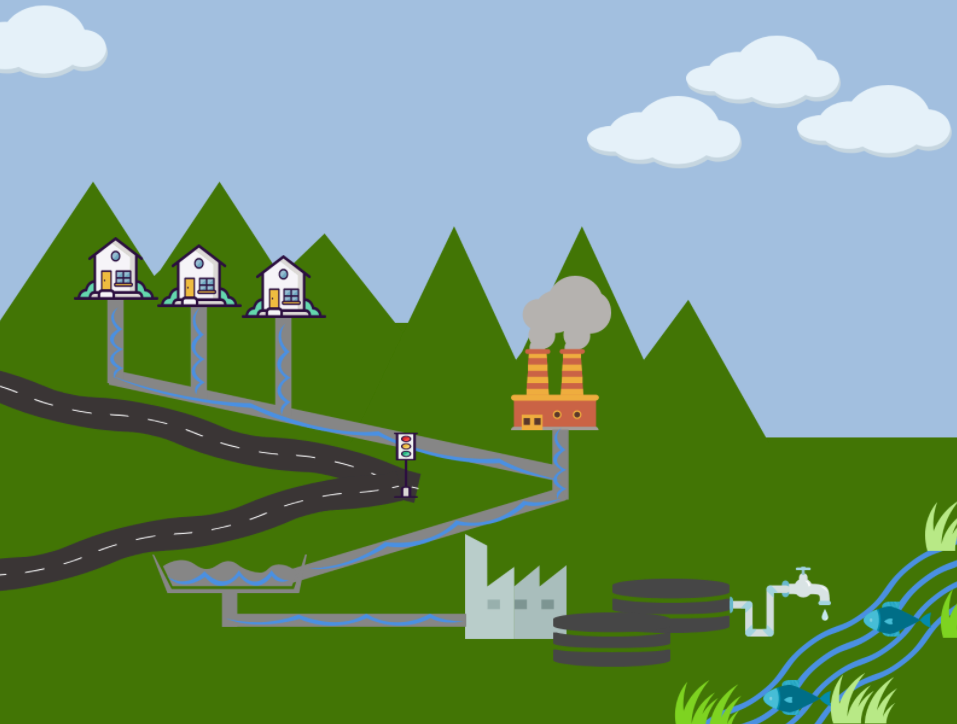Who & What Produces Wastewater (& Why I Should Care)
- Will Powell

- Jun 7, 2021
- 3 min read
If working with wastewater is not in your job description or in your field of study, you may not think about it much. However, maybe you should. How it is handled has a tremendous impact on all of us; whether tax dollars to pay for the municipal treatment or the potential impact on the environment we enjoy.
So what exactly is wastewater and how is it produced? What are the ways it is handled and/or disposed of? This is a pretty technical topic so we will just skim the surface here to aid in the general understanding.
In the simplest terms, wastewater is “used” water and can be categorized as: domestic or industrial. And, the treatment of liquid waste can be done either aerobically or anaerobically.

Domestic Wastewater:
Domestic wastewater comes in many forms. Below are a few examples:
Human waste: fecal matter and urine.
Food waste: waste washed down the drain and garbage disposal.
Bath water: water used in bathing which contains soaps, shampoos and cleaners.
Other: washing machine drainage containing soaps and detergents.
These wastes find themselves in sewer lines as they are transported by gravity to your nearest lift station or wastewater treatment plant. There, it goes through several stages of the treatment process. According to the USGS Water Q&A , a typical protocol involves:
Odor control - Chemical treatment to reduce foul odors
Screening to separate out the trash and larger particles
Primary treatment
Aeration- this allows gases to release and encourages bacteria to feed upon organic matter
Sludge removal- the removal of any settled solid material
Filtration- often through sand which reduces bacteria, odors and other contaminants
Digestion- either aerobic or anaerobic
Disinfection
Some advanced systems have additional treatments that promote biological processes, along with further disinfection.
As the WWTP Sludge Reduction article in Water & Wastes Digest explains, more often than not, residential and municipal treatment processes use aerobic systems which utilize oxygen to help the breakdown of organic wastes by way of microorganisms. This ultimately produces large amounts of sludge (residual organic solids) that require further action.

AlkapHix® Magnesium Hydroxide, manufactured by Garrison Minerals can be utilized throughout this treatment process to aid in odor removal, reduction of sludge (which is necessary for cost savings in aerobic systems), pH buffer and provide the necessary alkalinity. It also helps supply needed nutrients in the aerobic systems to aid in the biological processes and bacteria growth. This also helps to neutralize the effluent for further use in land applications as municipal fertilizers.
Industrial Wastewater:
Industrial wastewater also comes in many forms. Below are a few examples of industries that produce wastewater:

Animal processing plants
Food processing
Alcohol and beer production
Fertilizer and pesticide runoff
Auto mechanic garage
Hair salons
Paper and pulp manufacturing
Metal etching and finishing
Mining
Battery manufacturing
Industrial laundries
Petroleum refineries
Petrochemical plants
Power generation plants
Oil and gas
Steel and iron production.
Many of these industrial wastewater producers are able to recycle and reuse their wastewater once it has been treated to their desired specifications. Depending on the treatment process and system, energy can also be harnessed from the gases produced. This is typically done using an anaerobic system which produces carbon dioxide, water and newly created methane gas.
Again, this is where AlkapHix® Magnesium Hydroxide comes in! Our magnesium hydroxide can be utilized throughout the treatment process to neutralize the acidic waste streams and aid in the treatment process as a pH buffer and alkalinity source.
If they are unable to reuse the treated water within their own system, they generally return it to the hydrological cycle where it is combined with household wastewater and ultimately arrives at your local wastewater treatment plant. It is then treated using the protocol above.
There are many risks involved if wastewater is not treated.
A few of those risks include:
Untreated water poses a threat to humans and biological waterways by transmitting bacteria and viral diseases.
Aquatic wildlife can be decimated by either providing an excess of unnecessary nutrients or by introducing unnecessary oxygen absorbing organic matter. Harmful metals and chlorine compounds may also create toxic environments for aquatic species.
Garrison Minerals works diligently with municipalities and industrial wastewater plant operators to not only provide AlkapHix® Magnesium Hydroxide for their processes but also in consultation to ensure that the product is being used properly and efficiently ensuring cost savings and environmental safety.
----
Credits:
Credit: U.S. Geological Survey
Department of the Interior/USGS
Photo: Brunswick Cellulose paper plant, Brunswick, GA
Credit: U.S. Geological Survey
Department of the Interior/USGS
U.S. Geological Survey/photo by Alan Cressler


Comments